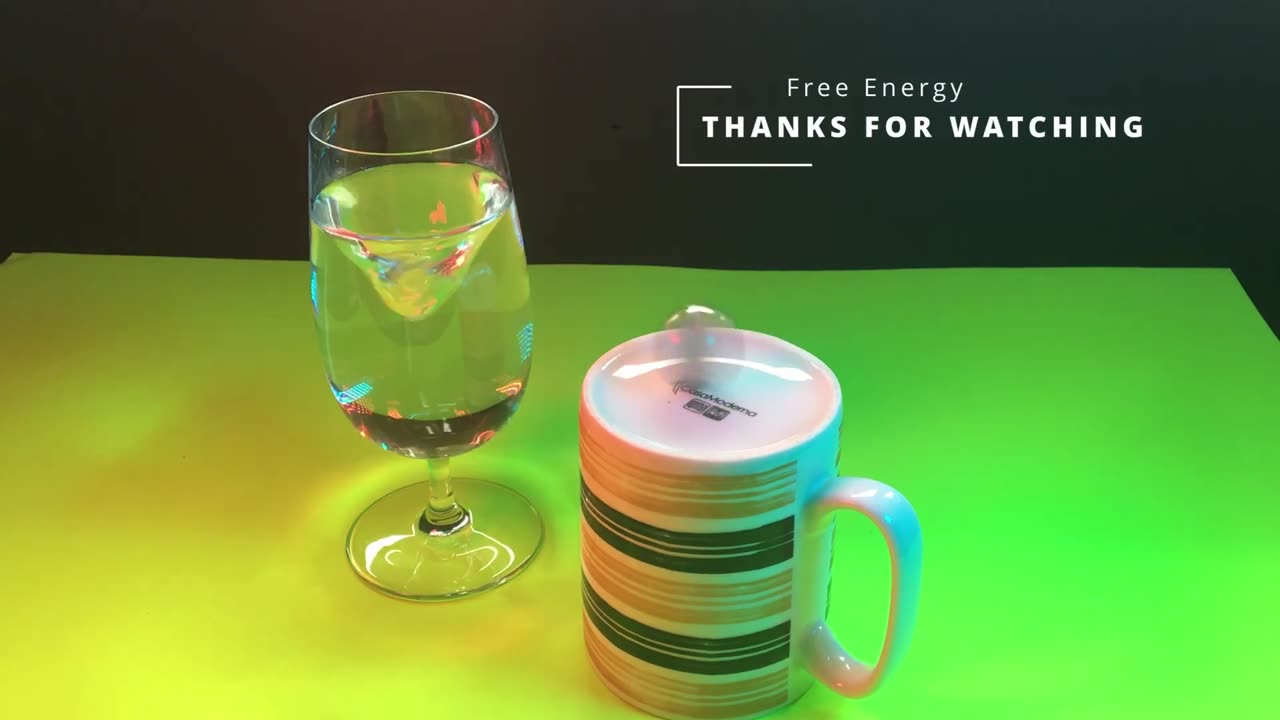Premium Only Content

Vortex Energy Transforms to Kinetic Energy - New Energy Generator freeenergy funny diy fyp fun
According to the second law of thermodynamics, for systems reacting at fixed temperature and pressure without the input of non-PV work, there is a general natural tendency to achieve a minimum of free energy.
A quantitative measure of the favorability of a given reaction under these conditions is the change ΔG (sometimes written "delta G" or "dG") in free energy that is (or would be) caused by the reaction. As a necessary condition for the reaction to occur at constant temperature and pressure, ΔG must be smaller than the non-pressure-volume (non-PV, e.g. electrical) work, which is often equal to zero (then ΔG must be negative). ΔG equals the maximum amount of non-PV work that can be performed as a result of the chemical reaction in the case of a reversible process. If analysis indicates a positive ΔG for a reaction, then energy — in the form of electrical or other non-PV work — would have to be added to the reacting system for ΔG to be smaller than the non-PV work and make it possible for the reaction to occur.
One can think of ∆G as the amount of "free" or "useful" energy available to do non-PV work at constant temperature and pressure. The equation can be also seen from the perspective of the system taken together with its surroundings (the rest of the universe). First, one assumes that the given reaction at constant temperature and pressure is the only one that is occurring. Then the entropy released or absorbed by the system equals the entropy that the environment must absorb or release, respectively. The reaction will only be allowed if the total entropy change of the universe is zero or positive. This is reflected in a negative ΔG, and the reaction is called an exergonic process.
If two chemical reactions are coupled, then an otherwise endergonic reaction (one with positive ΔG) can be made to happen. The input of heat into an inherently endergonic reaction, such as the elimination of cyclohexanol to cyclohexene, can be seen as coupling an unfavourable reaction (elimination) to a favourable one (burning of coal or other provision of heat) such that the total entropy change of the universe is greater than or equal to zero, making the total Gibbs free energy change of the coupled reactions negative.
In traditional use, the term "free" was included in "Gibbs free energy" to mean "available in the form of useful work". The characterization becomes more precise if we add the qualification that it is the energy available for non-pressure-volume work. (An analogous, but slightly different, the meaning of "free" applies in conjunction with the Helmholtz free energy, for systems at constant temperature). However, an increasing number of books and journal articles do not include the attachment "free", referring to G as simply "Gibbs energy". This is the result of a 1988 IUPAC meeting to set unified terminologies for the international scientific community, in which the removal of the adjective "free" was recommended. This standard, however, has not yet been universally adopted.
The name "free enthalpy" was also used for G in the past.
=======
credits to @freeenergy2022
-
 1:57:31
1:57:31
2 MIKES LIVE
12 hours ago2 MIKES LIVE #170 with special guest Rep. Buddy Carter (R-GA)
47.7K1 -
 1:02:58
1:02:58
Flyover Conservatives
22 hours agoA Doctors Response to Trump’s First Moves: W.H.O. and FDA - Dr. Troy Spurrill; A REAL-LIFE Approach to Health and Wellness Transformation - Kellie Kuecha Moitt | FOC Show
48.1K3 -
 41:50
41:50
State of the Second Podcast
7 hours agoWhat do Gold and Guns have in common?
20K4 -
 1:01:26
1:01:26
PMG
4 hours ago $1.18 earnedLibs In FULL PANIC Since Trump Took Office! Creating a Faith to Fit their Agenda
14.8K4 -
 7:09:22
7:09:22
Dr Disrespect
12 hours ago🔴LIVE - DR DISRESPECT - TRIPLE THREAT CHALLENGE - EXTREME EDITION
246K33 -
 55:00
55:00
LFA TV
12 hours agoThe End of the January 6 Hoax | TRUMPET DAILY 1.22.25 7pm
40K11 -
 1:13:37
1:13:37
Battleground with Sean Parnell
10 hours agoPresident Trump Is On FIRE w/ Savage Rich Baris
180K25 -
 1:59:59
1:59:59
Melonie Mac
6 hours agoGo Boom Live Ep 34!
73K17 -
 49:27
49:27
Sarah Westall
5 hours agoTrillion Dollar 5G Lawsuit, Project Archimedes, Mind Control & DEW Weapons w/Attorney Todd Callender
74.4K33 -
 53:11
53:11
Standpoint with Gabe Groisman
1 day agoTrump Is Crucial For Hostage Agreement Says Israeli Colonel
52.6K5